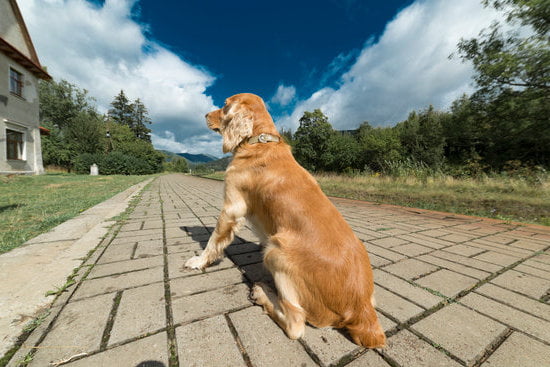Walking your dog can be a wonderful bonding experience, but it can quickly turn frustrating if your furry companion constantly pulls on the leash. In this article, we will discuss how to train your dog not to pull while walking, a common issue among pet owners. Understanding why dogs exhibit this behavior is crucial in addressing and correcting it effectively.
There are various reasons why dogs pull while walking, including their natural instincts to explore, follow scents, or simply their excitement. It is essential to decipher the root cause of this behavior before implementing any training techniques. Improper leash training can also contribute to pulling issues, highlighting the significance of proper guidance and consistency in teaching your dog proper walking etiquette.
To address the problem of pulling during walks, choosing the right equipment is key. From harnesses to head halters, selecting the appropriate gear can greatly aid in training your dog to walk on a loose leash. In the following sections, we will delve into step-by-step guides and positive reinforcement techniques to help discourage pulling behavior effectively while ensuring a harmonious walking experience for both you and your canine companion.
Importance of Proper Leash Training for a Well-Behaved Dog
Proper leash training is essential for ensuring that your dog behaves well while walking on a leash. Dogs, by nature, tend to pull on the leash due to their curious and energetic personalities. Understanding why dogs pull while walking is crucial in addressing this behavior. One common reason is that they are simply excited or eager to explore their surroundings. However, pulling can also be a sign of dominance or lack of proper training.
Training your dog not to pull while walking is not only important for your convenience but also for the safety and well-being of your pet. When a dog pulls on the leash, it can lead to injuries for both the dog and the owner, as well as create stress and frustration during walks. Proper leash training helps establish boundaries and expectations for your dog, leading to a more enjoyable experience for both of you.
In order to successfully teach your dog how to walk on a loose leash, you must first ensure that you have the right equipment. Choosing the correct type of collar or harness can make a significant difference in your training efforts.
For example, using a front-clip harness or head halter may help prevent pulling by redirecting your dog’s attention back towards you. Additionally, having a sturdy and comfortable leash will make it easier for you to communicate with your pet during training sessions on how to train dog not to pull while walking.
Choosing the Right Equipment for Leash Training
When it comes to leash training your dog and teaching them not to pull while walking, choosing the right equipment is essential. The type of leash and collar you use can have a significant impact on your training success. Here are some key considerations when selecting the appropriate gear for leash training:
- Harness: A harness can be a great option for dogs that tend to pull during walks. It distributes the pressure evenly across your dog’s body, reducing the strain on their neck and throat. Look for a front-clip harness, which helps discourage pulling by redirecting your dog’s focus back towards you.
- Flat Collar: A simple flat collar is another common choice for leash training. Make sure the collar fits properly – you should be able to fit two fingers comfortably between the collar and your dog’s neck. Avoid using choke or prong collars, as they can cause discomfort and even harm to your furry friend.
- Leash Length: The length of your leash can also impact your training efforts. A shorter leash allows for better control over your dog’s movements, making it easier to redirect their attention and prevent pulling. On the other hand, a longer leash provides more freedom but may make it harder to correct unwanted behaviors.
By selecting the right equipment that suits both your dog’s needs and your training goals, you’ll set yourself up for success in teaching your canine companion how to walk politely on a loose leash without pulling.
Remember that each dog is unique, so it may take some trial and error to find the perfect combination of gear that works best for both you and your furry friend. Don’t be afraid to experiment with different options until you find what helps reinforce good walking behavior and makes your outings enjoyable for both you and your pup.
Step-by-Step Guide on Teaching Your Dog to Walk on a Loose Leash
Training your dog not to pull while walking is an essential skill that can make your walks more enjoyable and safe for both you and your furry friend. By following a step-by-step guide, you can effectively teach your dog to walk on a loose leash.
To begin the training process, it is crucial to start in a low-distraction environment, such as your backyard or a quiet street. This will help your dog focus on the training without being overwhelmed by external stimuli. Here are some steps to follow when teaching your dog to walk on a loose leash:
- Start by getting your dog’s attention with treats or a favorite toy.
- Hold the leash so that there is no tension when your dog is walking beside you.
- When your dog starts to pull, immediately stop walking and wait for them to come back to you.
- Reward your dog with a treat or praise when they return to your side and the leash is loose.
- Continue this process, gradually increasing the distance you walk before stopping and rewarding.
Consistency is key when training your dog not to pull while walking. Make sure to practice these steps regularly and gradually introduce more distractions as your dog improves. With patience and positive reinforcement, you can successfully teach your furry companion to walk on a loose leash.
Remember, every dog is unique, so it may take time for some dogs to grasp this concept. Stay patient and consistent in your training efforts, and soon enough, you’ll be enjoying peaceful walks with your well-behaved pup by your side.
Utilizing Positive Reinforcement Techniques to Discourage Pulling
One of the most effective ways to teach your dog not to pull while walking is by utilizing positive reinforcement techniques. Positive reinforcement involves rewarding your dog for good behavior, which can help reinforce the desired actions and discourage pulling on the leash. This method focuses on rewarding your dog with treats, praise, or toys when they walk calmly by your side without pulling.
When implementing positive reinforcement, it is essential to be consistent and patient with your training. Start by rewarding your dog with a treat or praise every time they walk nicely beside you without pulling. This will help them associate walking politely on a loose leash with positive experiences. Over time, you can gradually decrease the frequency of treats as your dog becomes more accustomed to walking without pulling.
Another tip for using positive reinforcement is to make the rewards engaging and exciting for your dog. Choose treats that are high-value and appealing to them, such as small pieces of cooked chicken or cheese. By offering enticing rewards, you can keep your dog motivated and focused during training sessions on how to train a dog not to pull while walking.
| Positive Reinforcement Techniques | Benefits |
|---|---|
| Rewarding with treats, praise, or toys | Reinforces desired behavior and discourages pulling |
| Being consistent and patient | Helps create lasting behavior change in dogs |
| Using high-value rewards | Keeps dogs motivated and engaged in training |
Common Mistakes to Avoid While Training Your Dog Not to Pull
When it comes to leash training your furry companion and teaching them how to walk without pulling, there are common mistakes that dog owners often make. By being aware of these errors, you can effectively avoid them and help your dog succeed in mastering loose leash walking.
Setting Unrealistic Expectations
One common mistake dog owners make when trying to train their dogs not to pull while walking is setting unrealistic expectations. It’s important to remember that dogs need time to learn new behaviors, and consistency is key. By expecting your dog to immediately stop pulling on the leash after just a few attempts, you may become frustrated and give up too soon. Patience is essential in the training process.
Using Punishment Instead of Positive Reinforcement
Another mistake to avoid when training your dog not to pull is using punishment as a method of correction. While it may be tempting to scold or use forceful techniques when your dog pulls on the leash, this can actually create fear and anxiety in your pet.
Instead, focus on positive reinforcement by rewarding good behavior with treats or praise. This will help build a strong bond between you and your dog while encouraging them to walk calmly by your side.
Skipping Consistent Training Sessions
Consistency is crucial in leash training a dog not to pull while walking. One common mistake that many dog owners make is skipping or neglecting regular training sessions. Training should be incorporated into daily walks as a routine practice rather than an occasional task. By consistently working with your dog on loose leash walking, you reinforce the desired behavior and help them understand what is expected of them during walks. Remember, practice makes perfect.
By avoiding these common mistakes in training your dog not to pull while walking, you can set both yourself and your furry friend up for success in achieving peaceful strolls together.
Practical Tips for Consistent Leash Training Success
Be Consistent With Your Training
Consistency is key when it comes to training your dog not to pull while walking. Make sure that every walk is an opportunity for training and reinforcing good behavior. Dogs thrive on routine, so establishing a consistent training schedule will help them learn faster and retain the lessons effectively. Remember that leash training is an ongoing process, so patience and persistence are crucial.
Start in a Controlled Environment
Before venturing out into busy streets or crowded parks, start your leash training in a controlled environment such as your backyard or a quiet neighborhood street. This will allow your dog to focus on you and the leash training without distractions. As your dog becomes more comfortable walking on a loose leash in a familiar setting, gradually introduce more challenging environments to reinforce the training.
Use Redirecting Techniques
When your dog starts to pull on the leash, instead of pulling back or yanking the leash, try using redirecting techniques. This can include changing directions abruptly, making quick stops, or distracting your dog with treats or toys.
By redirecting their attention back to you, you are teaching them that pulling is not rewarded and that staying close by is more beneficial. Remember to praise and reward your dog when they walk nicely on a loose leash to reinforce positive behavior.
By following these practical tips for consistent leash training success and staying patient throughout the process, you can effectively teach your dog how to walk without pulling. Remember that every dog learns at their own pace, so be sure to tailor your approach based on your furry friend’s unique personality and needs. With dedication and positive reinforcement, you’ll soon enjoy peaceful walks with a well-behaved companion by your side.
Troubleshooting Solutions for Persistent Pulling Behavior
Persistent pulling behavior while walking can be frustrating for dog owners, but it is essential to address the issue effectively. One common troubleshooting solution for persistent pulling behavior is to ensure that your dog is properly exercised and mentally stimulated before going for a walk. Dogs with pent-up energy are more likely to pull on the leash as a way to release their excess energy. Engaging in playtime or mental stimulation activities before walks can help alleviate this behavior.
Another helpful solution is to practice short training sessions specifically targeting loose leash walking in a controlled environment. Using treats and positive reinforcement, gradually introduce distractions to simulate real-world scenarios where your dog may be tempted to pull. By teaching your dog to focus on you and follow commands consistently, you can help reduce pulling behavior during walks.
Consistency is key when it comes to addressing persistent pulling behavior in dogs. It’s important to remain patient and dedicated to the training process, reinforcing good behaviors and redirecting or ignoring undesirable ones. Remember that every dog learns at their own pace, so be prepared to adjust your training methods as needed. With time and dedication, you can successfully train your dog not to pull while walking, creating a more enjoyable experience for both you and your furry companion.
The Long-Term Benefits of Leash Training for Both You and Your Dog
Leash training your dog not to pull while walking is a fundamental aspect of responsible pet ownership. By understanding the root of why dogs pull while walking, we can address this behavior with patience and consistency. Proper leash training is key to having a well-behaved and enjoyable walking experience with your furry companion.
Choosing the right equipment for leash training, such as a harness or gentle leader, can make a significant difference in your dog’s behavior during walks. Implementing a step-by-step guide on teaching your dog to walk on a loose leash is essential for success. Utilizing positive reinforcement techniques, such as rewards and praise, can effectively discourage pulling and encourage good behavior.
It is important to be aware of common mistakes to avoid during the training process, such as using punishment-based methods or inconsistent training routines. Consistency is key in achieving success when teaching your dog not to pull while walking.
By following practical tips and troubleshooting solutions for persistent pulling behavior, you can overcome challenges and maintain progress in leash training. Ultimately, the long-term benefits of leash training extend beyond just better walks – it strengthens the bond between you and your dog, enhances communication, and fosters a harmonious relationship based on mutual respect and trust.
Frequently Asked Questions
How Do I Train My Dog Not to Pull When I Walk?
Training your dog not to pull when walking requires patience, consistency, and positive reinforcement. Start by using a proper leash and harness, then practice walking with your dog in a controlled environment. Reward your dog for walking nicely beside you and redirect their attention if they start to pull.
Why Does My Dog Pull So Much When Walking?
Dogs pull on the leash for various reasons. It could be due to excitement, lack of training, fear or anxiety, or simply because they haven’t learned proper walking etiquette. Pulling can also be a result of your dog wanting to explore their surroundings or being overstimulated by sights and smells.
How Long Does It Take to Train a Dog Not to Pull?
The time it takes to train a dog not to pull when walking can vary depending on the individual dog and consistency of training. Some dogs may catch on quickly within a few weeks with daily practice, while others may take longer to break the habit of pulling.
It’s important to stay patient and dedicated to the training process to see long-lasting results.

Welcome to the blog! I am a professional dog trainer and have been working with dogs for many years. In this blog, I will be discussing various topics related to dog training, including tips, tricks, and advice. I hope you find this information helpful and informative. Thanks for reading!





